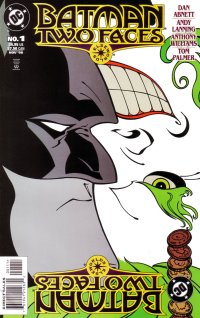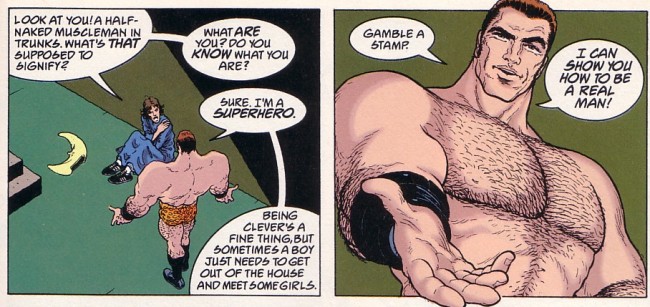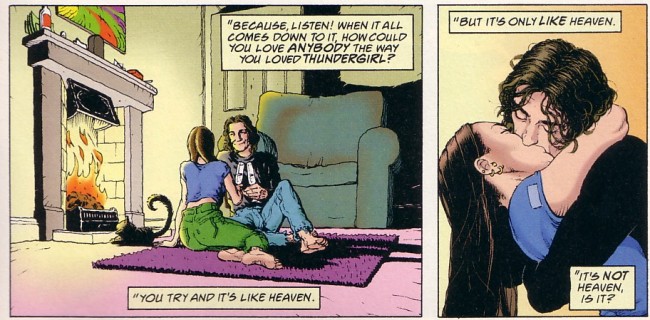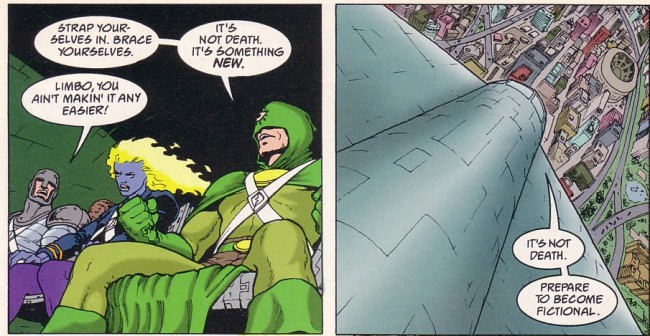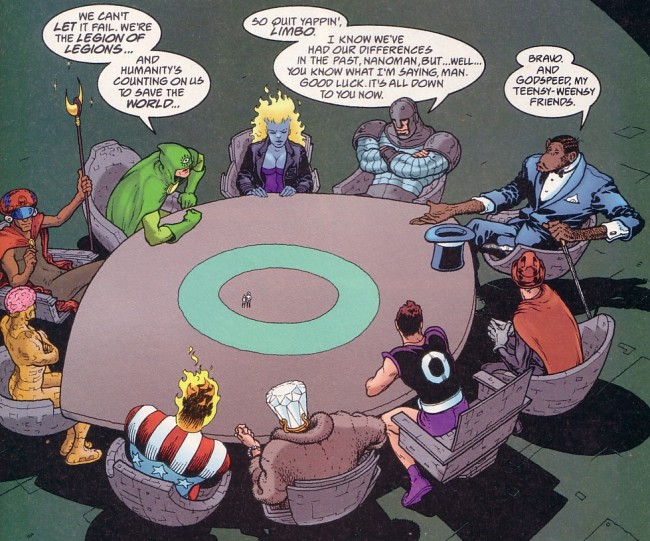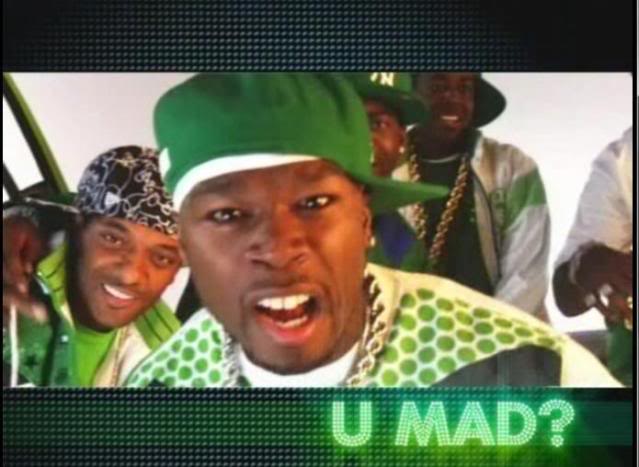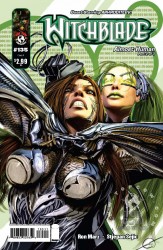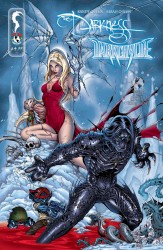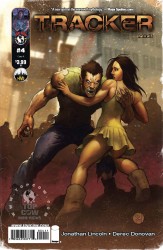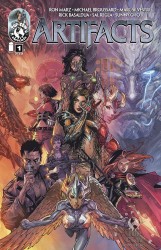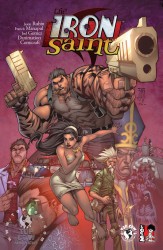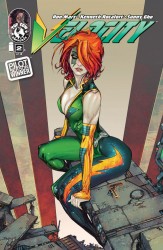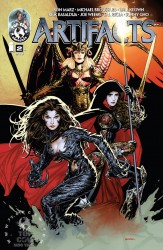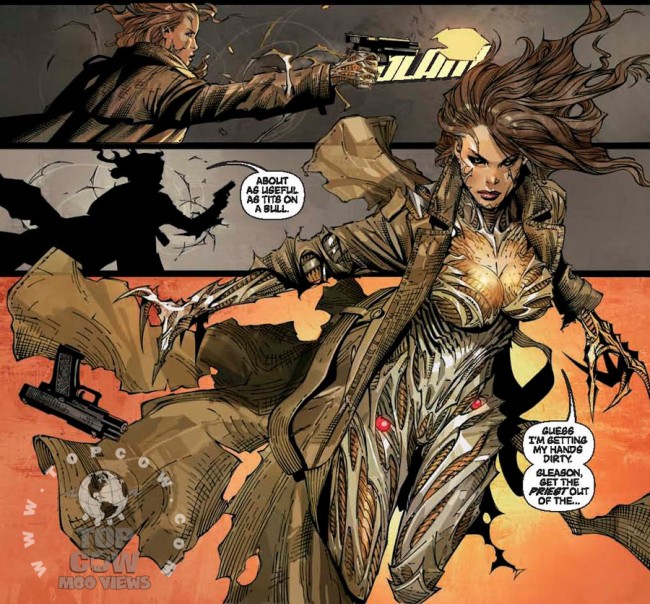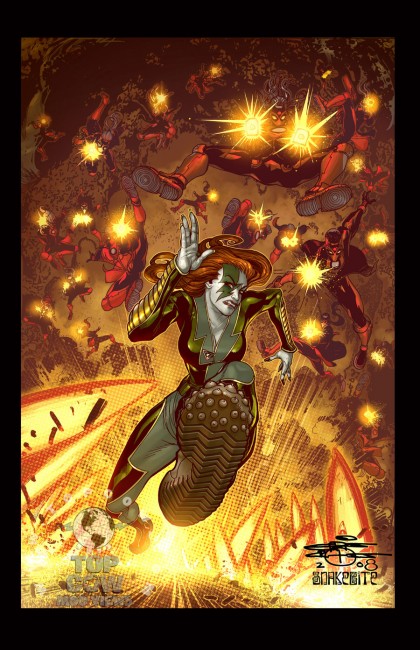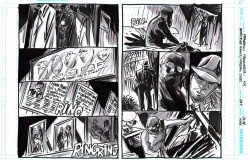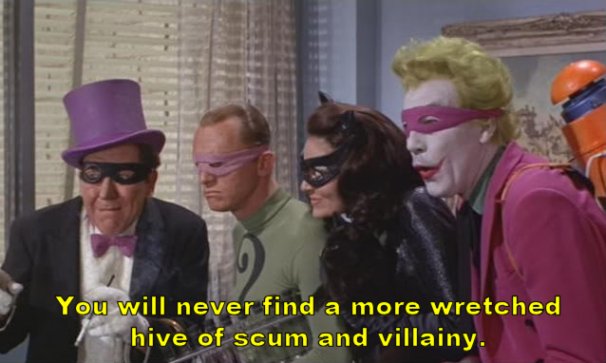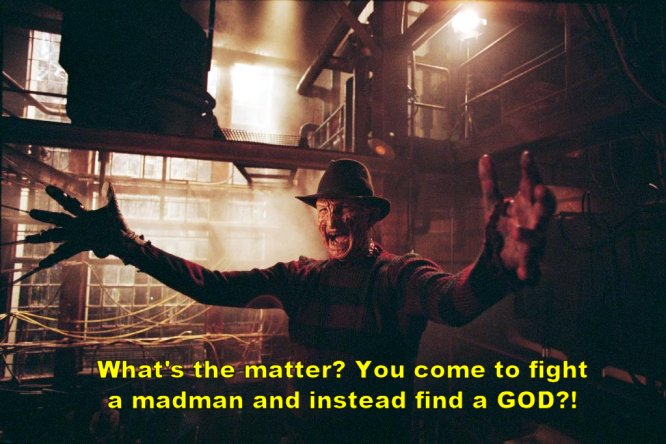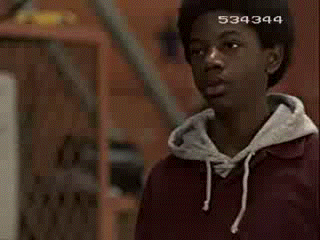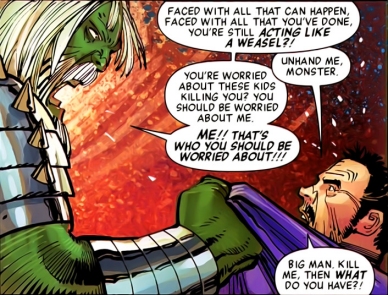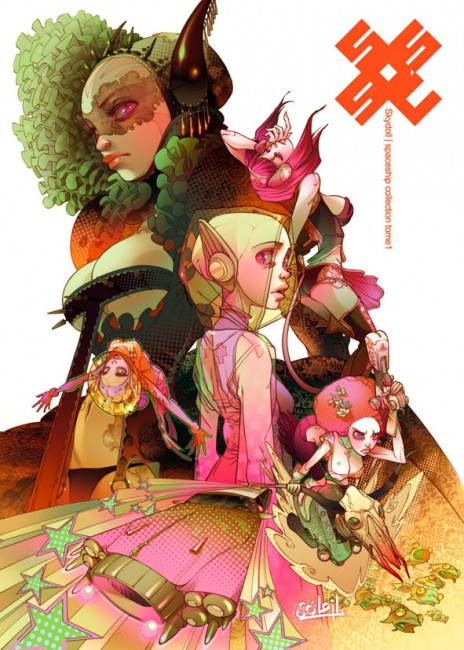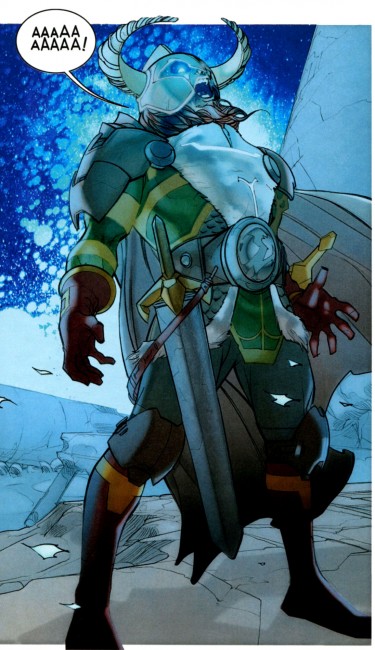
Not a joke! Not a snarky dismissal! I’m buying the Matt Fraction/Pasqual Ferry Thor because John Workman is lettering it.
That’s the pithy summary, anyway, but it’s no less true. Fraction is an okay writer who has done a few things I like (Casanova, Immortal Iron Fist) and a few things I don’t (Invincible Iron Man, Punisher War Journal) and Pasqual Ferry is a tremendous artist as far as I’m concerned, with great work done on everything from Superboy to Adam Strange to Ultimate Fantastic Four. Together, though, they aren’t quite enough to get me to read about Thor. I was going to give it a miss until I heard that Workman was lettering the book.
As far as I can tell, the only Thor you really have to read is Walt Simonson’s run on The Mighty Thor from the ’80s. The Kirby stuff never really clicked with me beyond the art, and the ’90s-era Thor was a tangled, knotted mess of a bunch of things I couldn’t have possibly cared about, no matter how hard I tried. Dan Jurgens and John Romita, Jr gave it a worthy try and told some good stories, but it never felt essential. J Michael Straczynski’s run on Thor
and told some good stories, but it never felt essential. J Michael Straczynski’s run on Thor had pretty pictures from Olivier Coipel and the same brand of overwrought moralizing that has infected JMS’s amazingly awful DC Comics work. Michael Avon Oeming and Andrea DiVito came closest to making great Thor comics with Avengers Disassembled: Thor
had pretty pictures from Olivier Coipel and the same brand of overwrought moralizing that has infected JMS’s amazingly awful DC Comics work. Michael Avon Oeming and Andrea DiVito came closest to making great Thor comics with Avengers Disassembled: Thor , which wore its Simonson influence on both of its sleeves and down the seam of its pants.
, which wore its Simonson influence on both of its sleeves and down the seam of its pants.
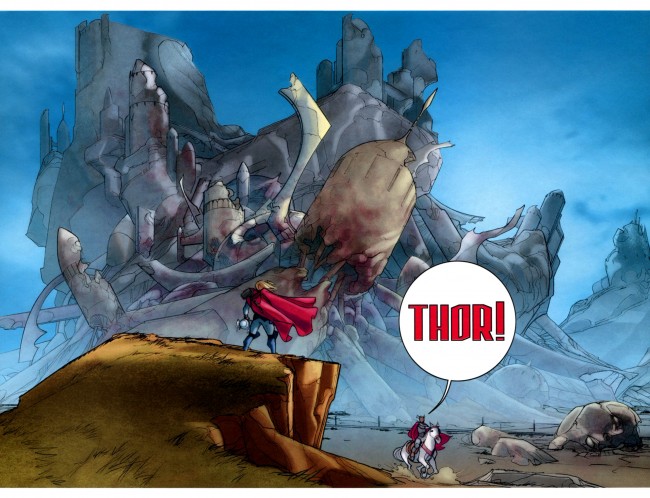
No, if you want Thor, you gotta go to Walter Simonson . With the aid of letterer Workman and colorists Christie Scheele (who I think also colored the Miller/Romita Man Without Fear, maybe?) and George Roussos, Simonson crafted a genuinely epic story. He took Thor high and low, introduced new members of the cast, took the traditional cast in new directions, and turned Thor into his book the way Miller did with Daredevil.
. With the aid of letterer Workman and colorists Christie Scheele (who I think also colored the Miller/Romita Man Without Fear, maybe?) and George Roussos, Simonson crafted a genuinely epic story. He took Thor high and low, introduced new members of the cast, took the traditional cast in new directions, and turned Thor into his book the way Miller did with Daredevil.
I only had a few random issues of his run as a kid, being focused mainly on Spider and X-related titles. I liked what I had, though, and I remembered my uncle being a big fan of his work, so I sought out the trades once I grew up. One thing I learned from them is that lettering matters. It is undeniably an integral part of the art. If you’ve ever read a comic where word balloons overlap and crowd out the art, you know exactly what I mean. Placement, type, and yes, even spelling, matter. Marvel’s flirted with lettering experimentation lately, probably most notably in Incredible Herc, but the majority of their books are more or less lettered identically. You never look at an issue of Avengers and go, “Whoa, that lettering looks great!”, you know?
Workman is the guy who gives your book personality. His style is distinct and instantly recognizable. Brett Lewis and John Paul Leon’s Winter Men benefitted greatly from his work. He lettered Paul Pope’s Batman Year 100 (in concert with Pope and Jared K Fletcher) and 100%. His balloons have tons of white space, more than they probably need, and long, crooked tails. His sound effects fill entire panels, and are as much a part of the art as Simonson’s pencils or Scheele/Roussos’s colors. The style of Simonson’s Thor is inextricably linked to Workman’s letters.
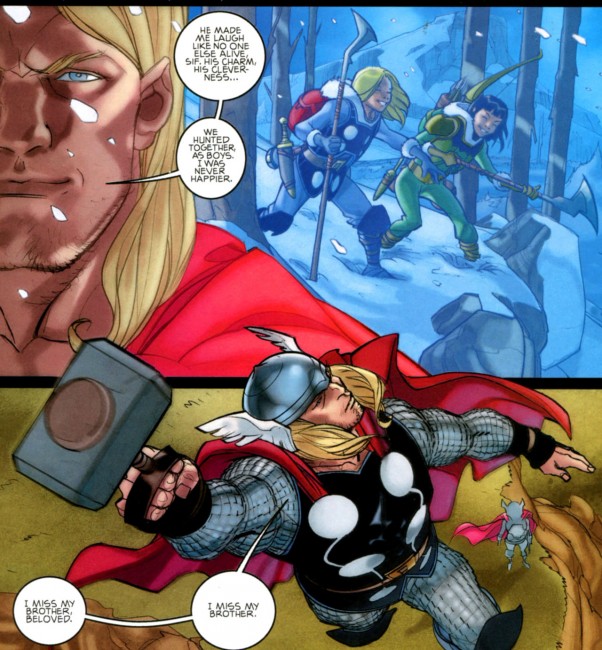
I mean, seriously. The foreshadowing of Surtur wouldn’t have been half as awesome without Workman’s letters, and the bit where Surtur cuts a “DOOM!” in half with Twilight? Fantastic. Pencils, inks, colors, and letters all working in concert to tell one story. That’s how comics should be.
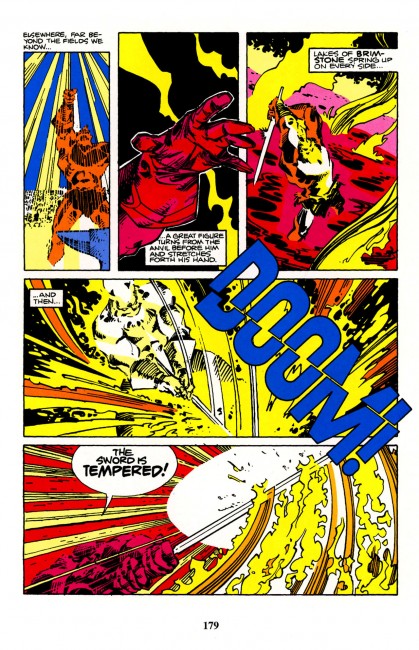
Everyone who comes onto Thor is sitting in Simonson’s shadow. He’s the guy to beat. Most people who end up working with Thor are honest about it in interviews (JMS, Fraction, Ferry, Simone Bianchi, for example) or it reflects in the work (Oeming). Fraction and Ferry have been very open about loving Simonson’s run, which is cool, but plenty of people have said that and then produced crap. How many people have talked about Grant Morrison when taking over one of his characters, ideas, or former series and then delivered nothing worth reading? Talk is cheap.
The presence of Workman on the book, though, is the difference. I hadn’t realized it, but Workman’s letters are how Thor is supposed to talk. The sound effects, the balloons, the letters, all of that is undeniably Thor to me. Similar to how Spawn needs Tom Orzechowski or seeing a realistically rendered Patsy “Hellcat” Walker looks wrong, Thor without Workman just isn’t Thor. Going off and getting Workman speaks to the kind of story that they’re trying to tell. It’s an effort that I can respect, and moved me enough to grab the first issue of the Fraction/Ferry run.
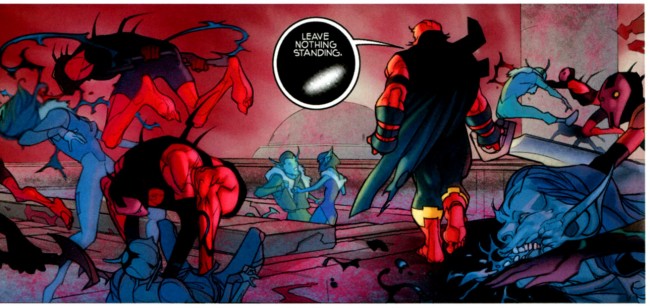
Verdict? Four dollars for a 22-page comic is entirely too high, but Ferry’s art is off the meter, Hollingsworth’s colors are real good, and Fraction’s got a great handle on everyone involved. The plot is looking good, just that sublime mix of sci-fi and magic that makes Marvel’s Thor what he is, and the enemies are appropriately fearsome. Workman absolutely kills on the lettering, particularly on the last balloon in the book, “I think I tasted blood,” the creepy black balloons, and Heimdall’s scream. The fact that there are ten double page spreads, all dedicated to non-Earth locales, is interesting. I think it’s too soon to call, but my best guess is that Fraction and Ferry are doing that to show the larger than life nature of the gods and the other of the nine worlds. There are three pages set in Asgard that aren’t spreads, and all the Earth pages are singles. I’m definitely going to be watching to see how that develops.
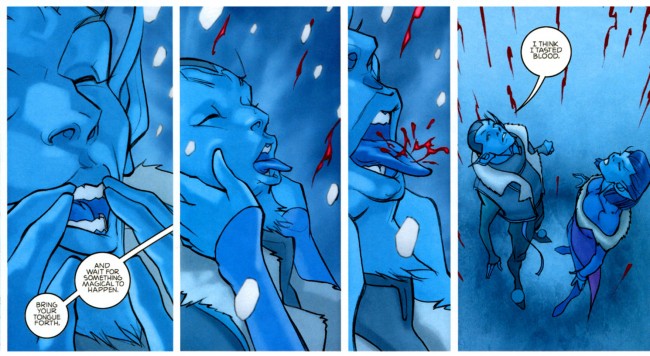
You should be reading it.

